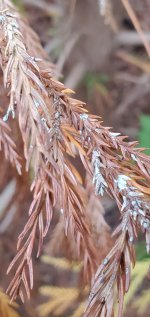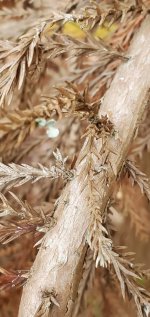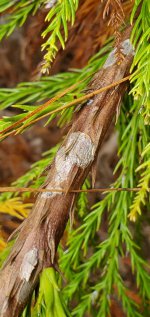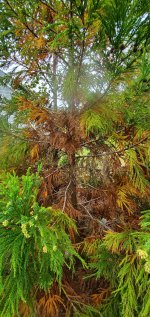Greetings, welcome to the Forums.
I'm not certain what is ailing your Cryptomeria japonica, commonly known as Japanese Cedar or Sugi.
There are several blights and leaf spot diseases known to affect Cryptomeria, including the fungi Pestalotiopsis funerea and Passalora sequoiae. However, often with these situations, the terminal disease is more of an end result than an initial cause. In many cases, poor culture (particularly water and drainage), siting, and tree selection,will have preceded any disease progression
I would seek the help of a fully certified arborist who is knowledgeable about these diseases. This means being more than just a tree trimming/removal service. Ideally, the disease would be diagnosed and then a treatment or replacement plan decided upon. However, sometimes certain diagnosis is not practical or even possible. In any case, an arborist can help you sort through your options. First you will want to decide how long you are willing to live with an unsightly tree as it heals, if it heals. and how much you are willing to pay to cure it. Also consider the costs of any personal or environmental exposure to fungicide chemicals, which are toxic and carcinogenic to non-target organisms, including humans. If you do decide to go the treatment route, the arborist can help you decide on which fungicide(s) to apply, when, and how often...
I don't mean to be overly leading, but yes, often removal and replacement do end up being the wisest option.
If you do decide to replace the trees, I will give you this piece of advce. Do NOT plant adjacent multiples of the same species. No matter what some horticulturally ignorant landscape designers might say. Plant a diversity of different species to reduce or block any future disease spread.





